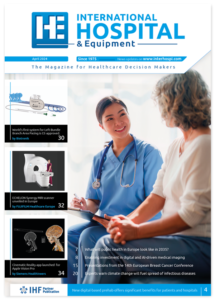Metal-on-metal hip replacement patients at no more risk of developing cancer in seven years following surgery
Patients who have had metal-on-metal hip replacements are no more likely to develop cancer in the first seven years after surgery than the general population, although a longer-term study is required, a study led by the University of Bristol claims.
A recent BMJ and BBC Newsnight investigation looked into the potentially high level of toxic metals from failing hip implants which may, in future, affect thousands of people around the world. The investigation also looked at why these hip replacements were allowed despite the risks being known and documented for decades. The BMJ has a large collection of articles about the safety of medical devices which can be found here.
This study, commissioned by the National joint Registry of England and Wales and carried out by authors from the Universities of Bristol and Exeter, looks at whether these concerns are valid. The registry contains records of over one million procedures from at least 97 per cent of orthopaedic units. Every year registry data and hospital episode statistics are linked up to check how patients who have had joint replacements are faring.
Ashley Blom, Professor of Orthopaedic Surgery in the School of Clinical Sciences at the University of Bristol, who led the team that undertook the study, said: ‘This research shows that there is no increased risk of cancer with metal-on-metal hip replacements in the first seven years after surgery. Although this is very reassuring, we do not know what are the long-term risks and thus further studies will be necessary in the future.’
In this study cancer rates in patients with metal-on-metal hip replacements were compared with both a group of patients who had other hip bearing surfaces implanted and the general population. Overall, 14 per cent (40,576) of registered patients had some type of metal-on-metal bearing surface: seven per cent (21,264) had a stemmed metal-on-metal prosthesis and seven per cent (19,312) had a resurfacing procedure. The researchers compared patients’ outcomes using mathematical modelling. The models included the age and sex of the patient as well as three measures of general health at the time of hip surgery (the American Society of Anaesthesiologists grade that scores the patient’s other serious illnesses, the number of distinct diagnostic codes recorded at time of surgery, and the number of NHS funded admissions to hospital in the previous five years). The authors do say, however, that comparison with the general population is not straightforward as hip replacement patients ‘tend to be healthier than others of the same gender and age group’.
Results show that the chance of a 60-year-old man with moderate health and a metal-on-metal stemmed hip replacement being diagnosed with cancer in the five years following surgery is 6.2 per cent, compared to 6.7 per cent chance with hip replacement using other bearing surfaces. For women, these figures were 4.0 per cent for metal-on-metal stemmed hip replacement and 4.4 per cent for other bearing surfaces. Further results show that the incidence of cancer diagnosis is low after hip replacement and lower than that predicted for the age and sex matched general population.
The authors hope that this study will help clinicians reassure patients that the ‘risk of cancer for hip replacement patients is relatively low’ with no evidence of an increase in cancer associated with metal-on-metal hips. They add though that this only shows results for up to seven years following surgery and the analysis of long-term data is required over the next few decades as some cancers take many years to develop.
University of Bristol

